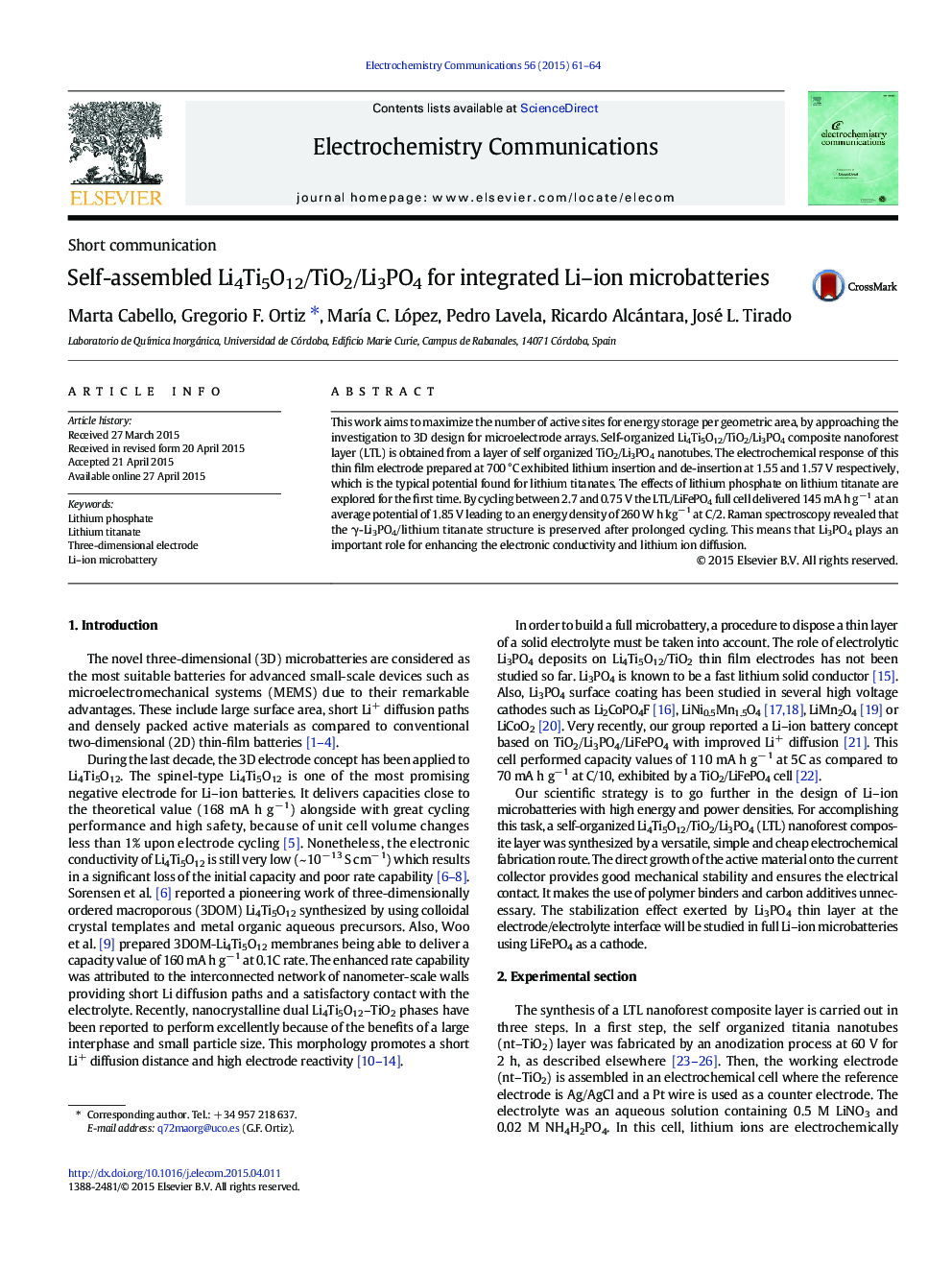| Article ID | Journal | Published Year | Pages | File Type |
|---|---|---|---|---|
| 178908 | Electrochemistry Communications | 2015 | 4 Pages |
•Li4Ti5O12/TiO2/Li3PO4 nanoforest electrode is prepared by a versatile electrochemical method.•Rutile and Li3PO4 improve Li+ diffusion and cycling stability in lithium-ion microbatteries.•The lithium titanate in the full cell vs. LiFePO4 delivered an energy density of 260 W h kg− 1.
This work aims to maximize the number of active sites for energy storage per geometric area, by approaching the investigation to 3D design for microelectrode arrays. Self-organized Li4Ti5O12/TiO2/Li3PO4 composite nanoforest layer (LTL) is obtained from a layer of self organized TiO2/Li3PO4 nanotubes. The electrochemical response of this thin film electrode prepared at 700 °C exhibited lithium insertion and de-insertion at 1.55 and 1.57 V respectively, which is the typical potential found for lithium titanates. The effects of lithium phosphate on lithium titanate are explored for the first time. By cycling between 2.7 and 0.75 V the LTL/LiFePO4 full cell delivered 145 mA h g− 1 at an average potential of 1.85 V leading to an energy density of 260 W h kg− 1 at C/2. Raman spectroscopy revealed that the γ-Li3PO4/lithium titanate structure is preserved after prolonged cycling. This means that Li3PO4 plays an important role for enhancing the electronic conductivity and lithium ion diffusion.
Graphical abstractFigure optionsDownload full-size imageDownload as PowerPoint slide
